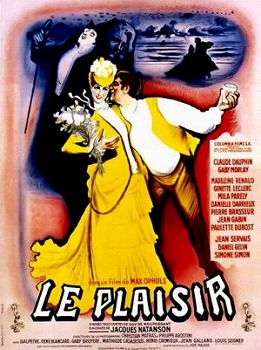 |
| Harry Baur in Les Misérables |
Javert: Charles Vanel
Fantine: Florelle
Cosette: Josseline Gaël
Cosette as a child: Gaby Triquet
Marius: Jean Servais
Éponine: Orane Demazis
Éponine as a child: Gilberte Savary
Thénardier: Charles Dullin
Mme. Thénardier: Marguerite Moreno
Gavroche: Émile Genevois
Enjolras: Robert Vidalin
Grantaire: Paul Azaïs
M. Gillenormand: Max Dearly
Monseigneur Myriel: Henry Krauss
Director: Raymond Bernard
Screenplay: Raymond Bernard, André Lang
Based on a novel by Victor Hugo
Cinematography: Jules Kruger
Production design: Lucien Carré, Jean Perrier
Music: Arthur Honegger
Harry Baur gives one of the great film performances in Les Misérables, beginning with a tour de force in the first installment, subtitled Tempest in a Skull, in which he plays not only the brutish convict Jean Valjean and his first assumed identity, the benevolent mayor of Montreuil-sur-Mer, M. Madeleine, but also the addle-brained Champmathieu, wrongly fingered as the fugitive Valjean. Baur's Valjean is not the dashing, younger heroic figure embodied by Fredric March in Richard Boleslawski's 1935 Hollywood version or Hugh Jackman in Tom Hooper's 2012 film of the musical. March and Jackman had to work hard to suggest Valjean's hardened convict past, but Baur looks the part. He cleans up nicely, though. Raymond Bernard's version is closer to the epic Victor Hugo novel than the later adaptations, which necessitates its miniseries length: a 281-minute total run time, divided into three films. Trilogies typically sag in the middle: In Peter Jackson's Lord of the Rings, for example, The Two Towers (2002) is weaker than The Fellowship of the Ring (2001) and The Return of the King (2003). But Bernard manages to give each part fairly equal heft, concentrating on Valjean's transformation in Tempest in a Skull, on the thwarted manipulations of the titular couple in The Thénardiers, and on the fight on the barricades in Freedom, Dear Freedom. This is not to say that there isn't some slackness within each installment: Bernard, like many directors who mastered their skills making silent films, doesn't seem fully at home with sound even yet; there are scenes in which the actors seem to be holding a pose a beat or two longer than necessary. And despite Arthur Honegger's distinguished score, Bernard allows some scenes that could use the "sweetening" of background music to go without it. In The Thénardiers, for example, the plot to ensnare Valjean and the ensuing fight scene could have used some tension-and-release music, but the score only begins, rather abruptly, when the lovers, Marius and Cosette, meet. But as a totality, Les Misérables is a triumph, and apparently a little-known one, to judge by the fact that it doesn't come up as one of the top results in an IMDb search. Jules Kruger's cinematography gives an expressionist tilt to some of its scenes, and the production design, from the slummy haunts of the Thénardiers to the opulence of Gillenormand's mansion, is superb. But most of all it has Baur and a tremendous supporting cast, particularly Florelle* as a very touching Fantine, and Émile Genevois as a memorable Gavroche. Charles Vanel's Javert is not humanized sufficiently in the script, I think, so that his suicide comes as something of an anticlimax, but he gives it all the implacable menace the role allows him. But it's Baur who carries the film as impressively as he carries Jean Servais's Marius through the sewers in the climax.
Filmstruck Criterion Channel
*Her full name was Odette Elisa Joséphine Marguerite Rousseau, and she was occasionally billed as Odette Florelle. It's too bad that today her screen name sounds like that of an air freshener.

